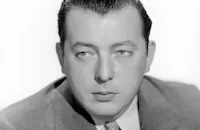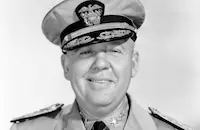In 1946, Ingrid Bergman’s contract with independent producer David O. Selznick, who had brought her to Hollywood in 1939, expired, and she decided to pursue work as a free agent. For her first film, she chose this 1948 romantic drama. It didn’t produce the box-office winner she had hoped for, but at least it gave her a chance to reunite with Charles Boyer—the leading man in Gaslight (1944), the first film to win her an Academy Award—and work with the great director Lewis Milestone. The film was a reunion for Milestone as well, marking his return to the work of novelist Erich Maria Remarque, whose All Quiet on the Western Front had inspired the classic 1930 film for which Milestone won his second Oscar. Although not well-received by critics at the time of its release, it now stands as a fascinating chapter in the careers of its director, stars and co-star Charles Laughton.
The film was adapted from Remarque’s 1945 bestseller about refugees struggling to survive in Paris. It focuses on Dr. Ravic, a German surgeon who had to flee his homeland after helping Jews escape from the Nazis. He survives in Paris by operating a secret clinic for clients referred to him by other doctors and a White Russian working as a hotel doorman. Ravic saves a cabaret singer, Joan Madou, from committing suicide after the death of the man who had been keeping her. As he nurses her back to health, they fall in love, but they’re separated when he’s deported to Germany. When he finally escapes, their reunion is compromised by the fact that she has found a new wealthy lover while he is bent on revenge against Ivon von Haake, a Gestapo agent who had tortured him and killed a woman he loved in Germany.
Producer David Lewis saw the cinematic potential in the novel and in 1945 set up Arch of Triumph, Inc. with Remarque and the owners of the recently formed Enterprise Pictures, Charles Einfeld and David L. Loew. Also involved in the corporation were Milestone, composer Louis Gruenberg and Bergman. Selznick had brought Bergman to Hollywood to star in Intermezzo (1939), the American version of a film of the same name that had made her a star in Sweden in 1936. To get the role in the U.S. film, she had to sign a standard seven-year contract with the independent producer. For most of that period, he simply loaned her out to other studios, pocketing the difference between the high fees he could command for her as her star rose and the smaller salary she had agreed to back in 1939.
Although Selznick’s influence had landed Bergman plum roles in films like For Whom the Bell Tolls (1943) and Gaslight, and he had spearheaded the ad campaign that helped her win the Oscar for the latter film, Bergman had come to resent his making a profit off her work. When her contract expired in 1946, she chose to go her own way, much to Selznick’s chagrin. For her first independent production, she signed a lucrative deal with Enterprise Pictures to star in Arch of Triumph for $175,000 and 25 per cent of the profits.
Irwin Shaw, a partner in Enterprise, worked on the script for five months. He also said he had been offered the chance to direct the film but had suggested Milestone instead. Initially Milestone hesitated to come on board because he disagreed with Shaw’s interpretation of the novel, particularly his minimization of the love story. Einfeld suggested he could work out revisions with Shaw, but Shaw never asked him for notes. Meanwhile, Milestone created his own script with writer Harry Brown. Bergman and the producers preferred Milestone’s script, and Shaw was paid off. His name is not in the film’s credits, at his request, and he also exited his partnership in Enterprise. His only remaining involvement was allowing Bergman occasional trysts at his Malibu home with his friend Robert Capa, whom Ingrid had secured a job as still photographer for the film. The two had met in Paris while Bergman was entertaining U.S. troops there for the USO and had become lovers.
The relationship was not going well, however, nor was Bergman’s marriage to neurosurgeon Dr. Petter Lindstrom. As a result, she arrived on the set in June twenty pounds overweight. Lindstrom’s response to her affair was passive-aggressive. Whatever time Bergman left the set, he made sure their daughter, Pia, was in bed by the time she got home, which added to Bergman’s feelings of frustration. She was also concerned about her look in the film. Working outside the major studios for the first time in years, she didn’t have anyone she could rely on to make sure her hair was properly fixed. On her secretary’s recommendation, she went to French hairdresser Marcel Machou and arranged a union waver so he could do her hair twice a day on set.
The Production Code Administration had problems with several elements of the novel. PCA head Joe Breen objected to the depiction of Ravic as an abortionist, his affair with Joan, her depiction as a kept woman and a mercy killing late in the story. Milestone and Brown dealt with that by implying that rather than performing abortions himself, he simply treated women who had been injured by illegal abortionists. The affair with Joan was only implied, and the mercy killing was cut. Milestone also convinced Breen that Joan was sufficiently punished for her sins to provide what the PCA called “compensating moral value.” When the script was submitted, Breen insisted they cut most of the details of von Haake’s murder and a scene set in a brothel. He also wanted Boyer to be punished for it but was finally persuaded to accept it as an act of war, which made it permissible. The brothel scene was cut.
Second-unit shooting in Paris was complicated when the government had to drain the Seine to remove bombs and make sure they hadn’t damaged any of the city’s bridges. The backgrounds had to be provided through special effects. The second unit also needed special permission to light the Arc de Triomphe for a night scene because a coal shortage had put Paris under a brown-out order. When the second unit moved to Cannes, the beach still showed signs of wartime damage the crew disguised by covering holes and burned-out German pill boxes with beach umbrellas. Studio scenes were shot in Enterprise’s new headquarters, the 14-acre California Studios, purchased from Hop-a-Long Cassidy (1935) producer Harry Sherman. The most elaborate set was a street scene at the corner of the Champs-Elysees and the Avenue Georges V, the site of a famous street cabaret. Photographs and film footage of the actual locations were shipped to the studio daily from Paris by special arrangement with TWA. In all, the production company built 112 sets for the film.
Bergman also made her share of difficulties. She was determined to have the film center on her character’s romance with Dr. Ravic, played by Boyer. Whenever Milestone tried to cut a scene between them, she fought to put it back in. That meant keeping a lengthy sequence in which the two vacation in the south of France. Others on the production suggested it might interfere with the audience’s sympathy for the characters, who are supposed to be living hand-to-mouth, but Bergman insisted her fans wanted to see her glamorously dressed, so the scenes stayed. She also fought against the seamier sides of the story. When Milestone wanted her to undress seductively in front of Boyer, she refused. She wouldn’t wear garters, as Milestone suggested, simply rolling down her stockings instead. With production delays, the company had to shoot all of Bergman’s scenes as quickly as possible because she had a firm start date in New York to rehearse for Maxwell Anderson’s Broadway play Joan of Lorraine.
Michael Chekhov, who had been Oscar-nominated for his performance opposite Bergman in Spellbound (1945), was the first actor cast as Ivon von Haake. He had to quit for health reasons, so the producers approached Laughton, who didn’t want to play such a small role. When additional scenes were added to get him to accept the part, they had to be filmed in New York, because Bergman was already there performing on Broadway. It was rumored that German playwright Bertolt Brecht, who had worked with Laughton on the English translation of his play Life of Galileo, was brought in by the actor to write those scenes.
The film’s rough cut ran four hours. In reducing it to two hours, Milestone had to cut subplots and supporting actors, including Ruth Warrick as a former lover of Boyer’s. Even with the cuts, the film did not go over well. Bosley Crowther of the New York Times dismissed it as “a gold-plated, Chanel-perfumed version of down-at-heel boy-meets-girl, a full Hollywood intensification of a doomed romance.” The film was a box-office disaster, with Bergman’s share of the profits amounting to 25 per cent of nothing. It did, however, have a lasting effect on her life in two ways. Although she had smoked occasionally in other films, it was her smoking in this role that left Bergman addicted to cigarettes for the rest of her life. Moreover, her unhappiness with Arch of Triumph and her subsequent film, Alfred Hitchcock’s Under Capricorn (1949), led her to write to Italian director Roberto Rossellini asking that they someday work together and setting the stage for the affair that would end the first phase of her U.S. film career.
Arch of Triumph was remade in Great Britain in 1984 as a television movie. Anthony Hopkins starred as Ravic, with Lesley-Anne Down as Joan and Donald Pleasence as von Haake and Waris Hussein directing. It had a brief theatrical release in the U.S. in 1985, scoring better reviews than had the original.
Producer: David Lewis
Director: Lewis Milestone
Screenplay: Milestone and Harry Brown
Based on the novel by Erich Maria Remarque
Cinematography: Russell Metty
Score: Louis Gruenberg
Cast: Ingrid Bergman (Joan Madou), Charles Boyer (Dr. Ravic), Charles Laughton (Ivon von Haake), Louis Calhern (‘Col.’ Boris Morosov), Roman Bohnen (Dr. Veber), J. Edward Bromberg (Hotel Manager at the Verdun), Ruth Nelson (Madame Fessier), Curt Bois (Tattooed Waiter), Michael Romanoff (Capt. Alidze), Feodor Chaliapin, Jr. (Scheherazade’s Chef), William Conrad (Policeman at Accident), Bess Flowers (Gambler at Roulette Table), Byron Foulger (Policeman at Accident), Irene Ryan (Irate Wife)




























